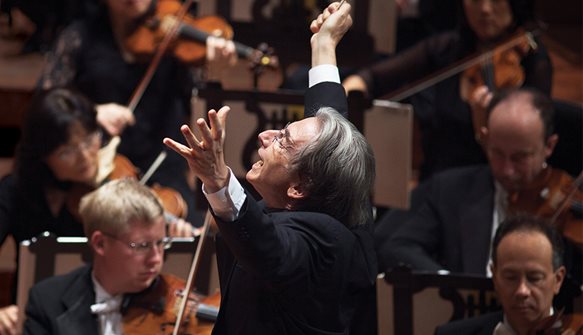
DUSTING OFF MAHLER’S FIRST, TENTH
Drawing on the first and last, the San Francisco Symphony perused the bookend Mahler symphonies. It was alpha and omega, A and Z, inaugural and swan song—all in one evening.
In the process, the SFS played the warhorse in the bunch, the Symphony No. 1, and made it seem fresh as a spring poppy, washing away all the usual starchiness. Credit the resourceful leadership of Music Director Michael Tilson Thomas, with countless nuances of dynamics and rubato (brief variants in tempo), particularly in the opening movement, much closer to Mahler’s own interpretations (At least, to judge by meticulously annotated Mahler scores from conductor Willem Mengelberg, a close Mahler associate who had documented Mahler led by Mahler on the podium).
The result is a vivid, colorful reading of the First, akin to getting a color-photo image after a lifetime of black-and-white. There’s also a tantalizing aura of mystery in the air, during and after.
On another level, the First offer a quote from the “Songs of a Wayfarer” in the nature-oriented first movement; in the second, an Austrian Laendler dance (precursor to the waltz); a rare contrabass solo (by Scott Pingel) in the third; and the jawa-dropping sight in the finale of eight horn players standing, performing with bells upraised for added emphasis.
More of a rarity is the Adagio from the symphony No. 10 left incomplete by the composer’s death at age 50. The 27-minute piece could be a metaphysical quest, perhaps reacting to the mysteries of the cosmos. It progresses peacefully and evenly, built on diaphanous strings, till a rude awakening with a splash of clashing brass—even more unexpected than Haydn’s “Surprise” Symphony. Was it perhaps a personal note, a reaction either to the composer’s own weakening heart, or to discovering other men hovering around his beloved wife Alma? It’s as if Mahler’s own tidy world was coming apart, reflected in a final symphonic work.
There are at least two posthumous “completions” of the Tenth by other composers. By playing only the complete Adagio, MTT clearly signal a dissatisfaction with the available extras.
MUSIC NOTES—For a superb video explanation of the First and its unusual origins, check out MTT’s “Keeping Score” video, including film footage from Mahler’s birth town of Kalischt (now Czech), and his later home Vienna.
Mahler’s first and last symphonies, S.F. Symphony under MTT, Davies Hall, S.F. , heard March 30. For more info: (415) 864-6000, or go online.